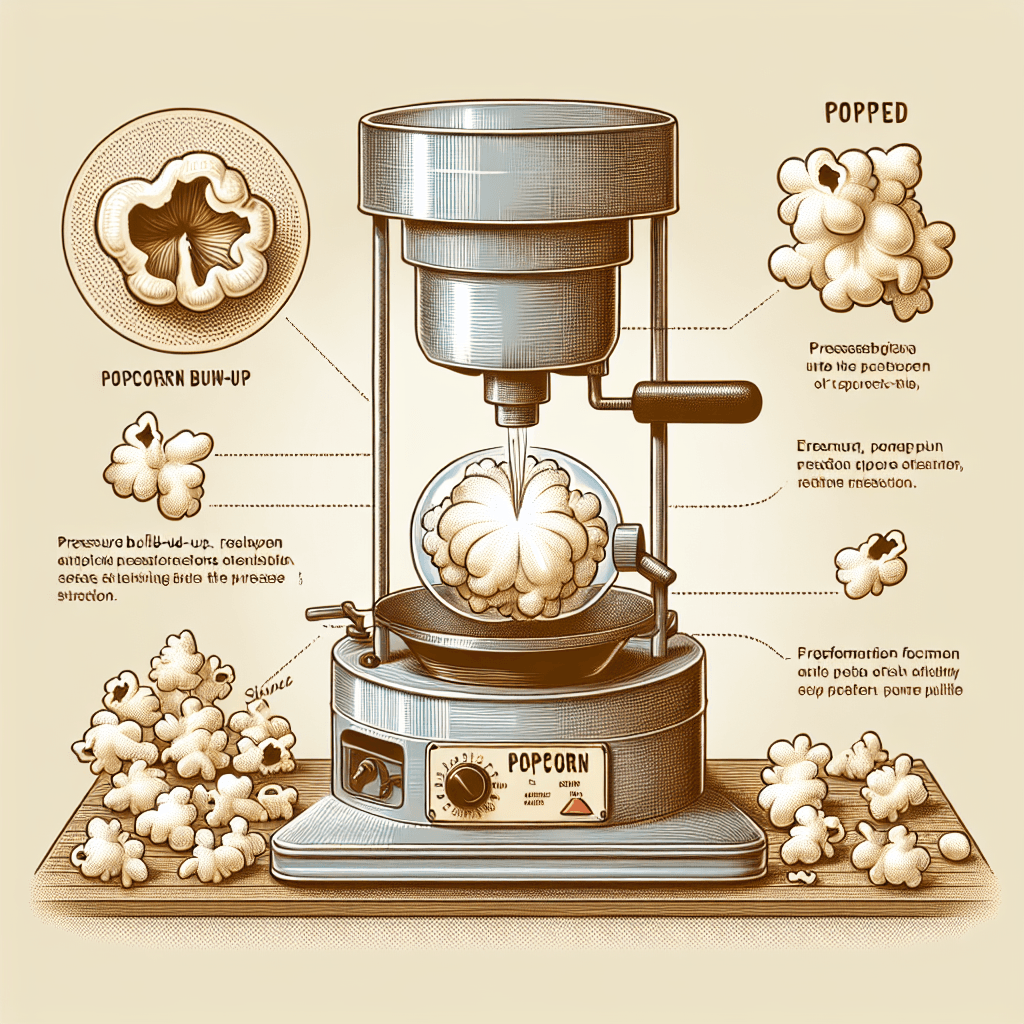The Science Behind the Snack: Why Does Popcorn Actually Pop
Ever wondered why those little kernels explode into fluffy white morsels? It's not magic, but a fascinating display of physics and food science.


Too Long; Didn't Read
A popcorn kernel's hard shell traps a droplet of water. When heated, this water turns to steam, building immense pressure until the kernel bursts, turning the starchy interior inside out into a fluffy snack.
The Science Behind the Snack: Why Does Popcorn Actually Pop?
That familiar, irresistible aroma fills the air, followed by a cascade of satisfying pops. Whether at the cinema, a carnival, or cozying up for a movie night at home, popcorn is a universally loved snack. But have you ever stopped mid-crunch to wonder why those little kernels explode into fluffy white morsels? It's not magic, but rather a fascinating display of physics and food science. Understanding the simple yet precise conditions required for that perfect pop adds another layer of appreciation to this humble grain. This post will delve into the science behind the spectacle, exploring exactly why popcorn actually pops.
The Anatomy of a Popcorn Kernel
Not just any corn kernel can perform this culinary feat. Popcorn comes from a specific variety of maize known as Zea mays everta, the only type that reliably pops. Its unique structure is key:
- The Pericarp (Hull): This is the hard, moisture-resistant outer shell. Its strength and ability to trap moisture are crucial for popping.
- The Endosperm: This makes up most of the kernel and contains granules of starch. Crucially, it also holds a small amount of water – typically between 13.5% and 14% by weight for optimal popping.
- The Germ (Embryo): The living part of the kernel, though less critical to the popping mechanism itself.
It's the combination of the tough, sealed pericarp and the precise moisture content within the starchy endosperm that sets the stage for the pop.
The Science of the Pop: Pressure Cooker Effect
When you heat popcorn kernels, the magic begins inside that tiny package.
Step 1: Heating and Steam Generation
As the kernel absorbs heat, the trapped water inside the endosperm starts to warm up. As it approaches and surpasses the boiling point of water (100°C or 212°F), it turns into steam. Because the pericarp acts like a seal, this steam cannot easily escape.
Step 2: Pressure Builds
With nowhere to go, the steam generates immense pressure inside the kernel. Think of it like a miniature pressure cooker. Food scientists estimate this internal pressure can reach up to 9 atmospheres (around 135 psi) – significantly higher than the pressure in a car tire! Simultaneously, the heat cooks the starch within the endosperm, softening it and turning it into a gelatinous, superheated goo.
Step 3: The Explosive Release
The kernel continues to heat, typically reaching around 180°C (355°F). At this point, the tough pericarp can no longer withstand the incredible internal pressure. It ruptures suddenly and violently.
Step 4: Starch Expansion and Solidification
The instant the hull breaches, the built-up pressure is released explosively. The superheated water vapor rapidly expands, causing the softened starch inside to inflate dramatically, turning the kernel inside out. This expanding starchy material quickly cools upon hitting the cooler air, solidifying into the familiar crunchy, fluffy shape we call popcorn. The entire process, from heating to popping, happens incredibly fast for each individual kernel.
Why Some Kernels Remain Unpopped ("Duds")
We've all encountered those stubborn unpopped kernels, often called "duds" or "old maids." This usually happens for two main reasons:
- Incorrect Moisture Content: If the kernel has too little water, it won't generate enough steam pressure to rupture the hull. If it has too much water, the steam pressure might build too slowly or unevenly, potentially leaking out before a forceful pop can occur.
- Damaged Pericarp: Even a tiny crack or imperfection in the hull can allow steam to leak out gradually as the kernel heats up. Without the ability to build sufficient internal pressure, the kernel will simply scorch instead of popping.
Nature's Tiny Explosion
So, the next time you hear that familiar popping sound, remember the incredible science packed into each tiny kernel. It's a perfectly orchestrated event involving heat transfer, phase changes (water to steam), immense pressure build-up contained by a tough natural shell, and the rapid expansion and cooling of starch. This simple snack is a testament to the fascinating principles of physics and chemistry at work in our everyday lives, turning a humble grain into a delightful, explosive treat. Understanding why popcorn actually pops just makes enjoying it even more satisfying.


